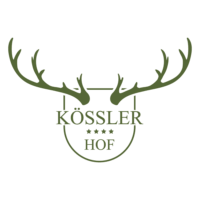January 9, 2023
The A-Z of Protein Powders
Did you know that protein powder isn’t just for the gym bros, the gym rats, the bodybuilders, or the Olympic trainers of the world? Shockingly few people realise that they can actually be a great help in everyday diets and aid in healthy aging. After all, protein is an important part of a healthy diet, and chances are you’re not getting enough of it. But a lot of people are lost on what you’re supposed to take and how, so we’re going through the basics of incorporating a protein powder into your lifestyle. What is the best protein for you, when should you take it and for what purpose?
What are the basic protein powders available?
If you go into any drugstore or sports store, you’re likely to see the usual suspects when it comes to protein powders: whey, casein, soy, pea, rice, and hemp. You’ll also find a range of supplements that can come in powder form, like Nestle’s Boost Optimum, which contains both whey protein and a lot of extra supplementary vitamins and probiotics.
Whey protein is the most common because it is also the most effective. Brands like NutraBio offer high-quality whey protein that comes from milk, contains all essential amino acids, and is known to be absorbed quickly. Casein is dairy-based and contains all amino acids, but it is absorbed slowly by the body, so it’s common for people to take it before bed to gain the most from it. Soy protein also has all amino acids and might support blood sugar control. Pea protein has good levels of most amino acids but low levels of non-essential amino acids cysteine and methionine. Rice protein is low in lysine, as is hemp protein, but it is high in fiber and omega-3 and omega-6.
However, the other half of the equation is when you should take your protein, which is really dictated by what you want to get out of it.
If you want to lose weight…
Protein, whether you’re exercising or not, is instrumental in weight loss as it raises your metabolism and lowers your appetite. The best way to use this knowledge is to eat a high-protein snack in between meals, leading to fewer calories consumed during the day. Powders can be one option here, but there are also bars out there, or high-protein supermarket foods, like yoghurts, that you can snack on.
However, protein for the sake of weight loss is best used in duality with exercise, where it has the double benefit of energising you for your workout.
If you want to build muscle…
You will need to consume more protein than your body breaks down during weight training or resistance training to see muscle growth, so it’s a good idea to supplement that with protein powder.
The best time to take that protein, however, is a topic with much discussion. The general rule of thumb is that you should consume a protein shake 15-60 minutes after your workout, but the International Society of Sports Nutrition has lately decided that that window, known as the anabolic window, is as big as 2 hours long.
If you want to prevent muscle loss…
As you grow older, protein shakes like Nestle’s Boost Optimum can help you turn that target from gaining muscle, to maintaining muscle. Experts recommend eating roughly 25-30 grams of protein per meal to make sure that you don’t experience muscle loss with age.






